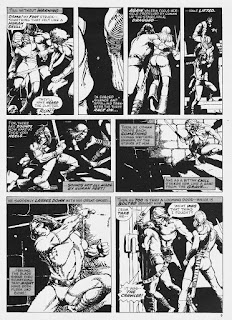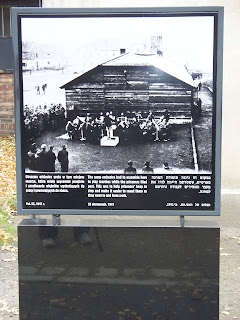"Red Nails"
Roy Thomas-Barry Smith
One has to pay dearly for immortality; one has to die several times while one is still alive.
Friedrich Nietzsche
Read more at https://www.brainyquote.com/quotes/friedrich_nietzsche_159186?src=t_immortality
Read more at https://www.brainyquote.com/quotes/friedrich_nietzsche_159186?src=t_immortality
One has to pay dearly for immortality; one has to die several times while one is still alive.
Friedrich Nietzsche
Read more at https://www.brainyquote.com/quotes/friedrich_nietzsche_159186?src=t_immortality
Read more at https://www.brainyquote.com/quotes/friedrich_nietzsche_159186?src=t_immortality
One has to pay dearly for immortality; one has to die several times while one is still alive.
Friedrich Nietzsche
Read more at https://www.brainyquote.com/quotes/friedrich_nietzsche_159186?src=t_immortality
Read more at https://www.brainyquote.com/quotes/friedrich_nietzsche_159186?src=t_immortality
One has to pay dearly for immortality; one has to die several times while one is still alive.
Friedrich Nietzsche
Read more at https://www.brainyquote.com/quotes/friedrich_nietzsche_159186?src=t_immortality
Read more at https://www.brainyquote.com/quotes/friedrich_nietzsche_159186?src=t_immortality
One has to pay dearly for immortality; one has to die several times while one is still alive.
Friedrich Nietzsche
Happy Super Blog Team-Up, everyone, and thanks for stopping by! If you've come from one of my partners, welcome - take a look around. I hope you'll like what you see. This blog posts twice each week, generally with a review of some great black-and-white comics on Mondays, followed by an artist spotlight/appreciation on Thursdays. The schedule's obviously a bit different this week, but that's a good thing - Super Blog Team-Up is always a great day!
If you're playing along for the first time, it's my habit to give a short synopsis of the plot, followed by a 3-tier collection of my thoughts and impressions of the material. Today will be no different, so let's get on with it!
100-Word Review:
Valeria is on a quest for loot. However, she finds herself in a predicament atop a butte - her discovery of a human skeleton is a mystery. She is soon joined by Conan the Cimmerian, who then helps her avoid death by a massive reptile. The two set off for a not-too-distant city in hopes of plunder, but find it deserted. Or so they think. The plot thickens as Valeria encounters a man who relates a tale of two peoples, seeking to kill each other off - to score more Red Nails. But it’s Olmec and Tascela who enter the story that provides the greatest tension. Both have their minds set on Valeria - Olmec for lust, Tascela for… immortality.
If you've not read this story before, I hope the page samples I've provided attest to its brilliance. The level of detail Barry Smith poured into this project is simply off-the-charts. As this would be his final Conan story (John Buscema had taken over the color monthly by this time), he didn't leave quietly. Which brings us to -
The Good: No sense in venturing too far from praising the art, so I'll continue. Wow. Just double-wow. When you think where Barry Smith started, largely aping Jack Kirby (one could do worse, I know) and then arriving to the style we were treated to in his latter-day Conan stories, the metamorphosis is almost unexplainable. To read the Conan the Barbarian color series from the beginning is to have a front row seat to a master honing his craft. I'd like you to be aware, through the many page samples I've supplied, of the level of detail in each panel. There are no shortcuts here - no panels without backgrounds, each box a work of art in its own right.
The adventure at the beginning of the story, with the "dragon", was enthralling and if that's all we'd gotten it would have been a splendid read. It was long, but really proved to be only an appetizer for what was to follow. So why so much time spent? The dragons, or at least knowledge of them, would come into play later in the narrative.
Smith also did a wonderful job of varying the camera angles, creating mood and even adding tension by the way he chose to depict each panel. I know I had no difficulty maintaining my interest in what is a very long story, or in discerning the action at any point.
Something I really enjoy about Conan is the seemingly endless possibilities. Sure, Robert E. Howard used geographic names that were familiar to those of us who've studied world history (and mythology) just a bit. But that Howard's Conan lived in a fantasy version of those familiar places opened up the opportunity to use large animals (as here), wizards, demons, all manner of weaponry, armadas and armies of all sizes and characteristics, and so on. And that the Conan mythos did not rely on continuity as did most four-color superhero comics, our hero could be dropped into any setting at any time and with any ally or enemy. Even Tarzan was confined to the jungle (before Edgar Rice Burroughs decided he needed to visit Pellucidar); not Conan. Desert, jungle, high seas, cold north, forgotten city -you name it, it could be done. And probably was. Take Valeria, for example: she's just dropped into this story. Conan knows her, but there is no evidence of her in any previous Howard-authored Conan story. I like that.
So let's talk about Roy Thomas's script. I've read the prose version of Red Nails three times, the comic version at least that many. Roy didn't have to take many chances here - Howard's original story was so solid, I think the strength of Roy's adaptation is that, for the most part, he left the story alone. Where Roy shows his skill is in the pacing - again, this is a looooong story at 58 pages. It never plays that way. Roy also gives us voices for each character in which we can believe said character would actually speak that way. And then Barry Smith made it happen, with facial expressions and body language. I know it's completely inappropriate in the age of #MeToo (or any age, truthfully), but the panels near the top of the post when Conan has become aware that the dragon is going to keep them on that butte for quite some time, and intends to pass the time with a little hanky panky, read as if watching a film. It's just perfect - the dialogue, pictures, camera angles... I said it previously - masterpiece.
Two tropes that appear in most Conan tales, sort of like bad guys using burner phones and good guys checking traffic cams on cop shows, are the protagonist getting ready to sleep with his/her eyes open and the use of a black lotus for mind-altering effects. Both of those are present in this story. I wore them like a pair of comfy bluejeans!
But seriously now, I've only seen scans online of the colorized version of Red Nails from Marvel Treasury Edition #4. I do own the Dark Horse Chronicles of Conan, volume 4 trade, and that has Red Nails in a computer-colored version. I can more easily take the four-color treatment than I can the computerized version, but I'd overall say that this story was meant to be read in beautiful black-and-white and it should only be enjoyed in that manner. Anything else, in my mind, detracts from the lines of the artist, which are splendid.
The Ugly: I don't have anything much to add in this section - in fact, I rarely do. But in regard to the quote by Nietzsche atop this post - Talesca had no relationships with any of the humans with which she lived. They existed in her sphere based on utility alone. No emotion, only self-preservation and self-renewal dominated her daily thoughts. At first we're led to believe that Valeria is the object of Talesca's intense gaze due to some romantic infatuation; we then learn that it is indeed because of Valeria's looks and physical prowess that Talesca has set eyes upon her, though not in the way we might have forecast. Like all those who seek to live beyond their prescribed times, Talesca eventually met her end. Unlike other characters in literature, however, Talesca found no release in death - only failure of goals unreached.
Two Staple Gold: Jim Henson Presents- The Soldier and Death
Comic Reviews By Walt: TMNT and Highlander
The Superhero Satellite: Mephistos Whisper: The Immortality Of Peter and Mary Jane (One More Day)
Comics Comics Comics Blog: Dr. Fate
Between The Pages Blog: Doctor Who @ Big Finish Productions
The Unspoken Decade: Opposites Attract - Archer and Armstrong
DC In the 80s: Young Animals Bug
Black, White and Bronze: What Price Immortality? A Review of Red Nails
The Daily Rios: Arion The Immortal (1992 Six Issue Mini Series)
Chris Is On Infinite Earths: Podcast Episode - Resurrection Man 1997 & 2011
In My Not So Humble Opinion : It Came from the 1990s: Ivar the Timewalker
The Retroist Via Vic Sage: I am Legend
The Source Material Comics Podcast: Vampirella - Roses for the Dead
Dave's Comic Heroes Blog: Multi-Man
Magazines and Monsters: Podcast episode - Kang/Immortus: Avengers-Kang: Time and Time Again TPB (Avengers 69-71)
Radulich Broadcasting Network: TV PARTY TONIGHT - Jupiter Ascending commentary





















































